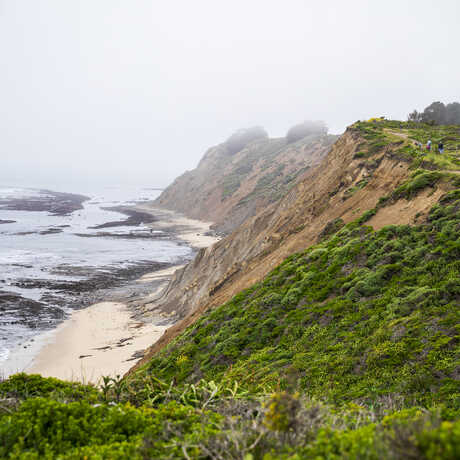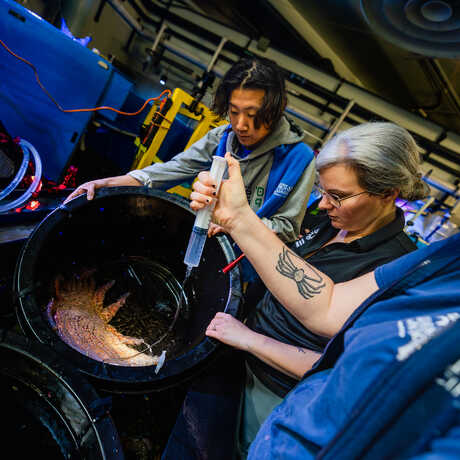Sea star wasting syndrome decimated sea star populations along the entire West Coast between 2013 and 2014, hitting sunflower sea stars (Pycnopodia helianthoides), giant pink sea stars (Pisaster brevispinus), and ochre sea stars (Pisaster ochraceus) particularly hard. Many species are still struggling to bounce back—and the sunflower star may even be considered locally extinct in some areas. We lack data on many sea star species and need your help to gather more information on where these species are found.
Because tides are at their lowest point in December and June due to the winter and summer solstices, it's the best time of year for California beachgoers to search for sea stars—and make a difference for the recovery of these important species.












